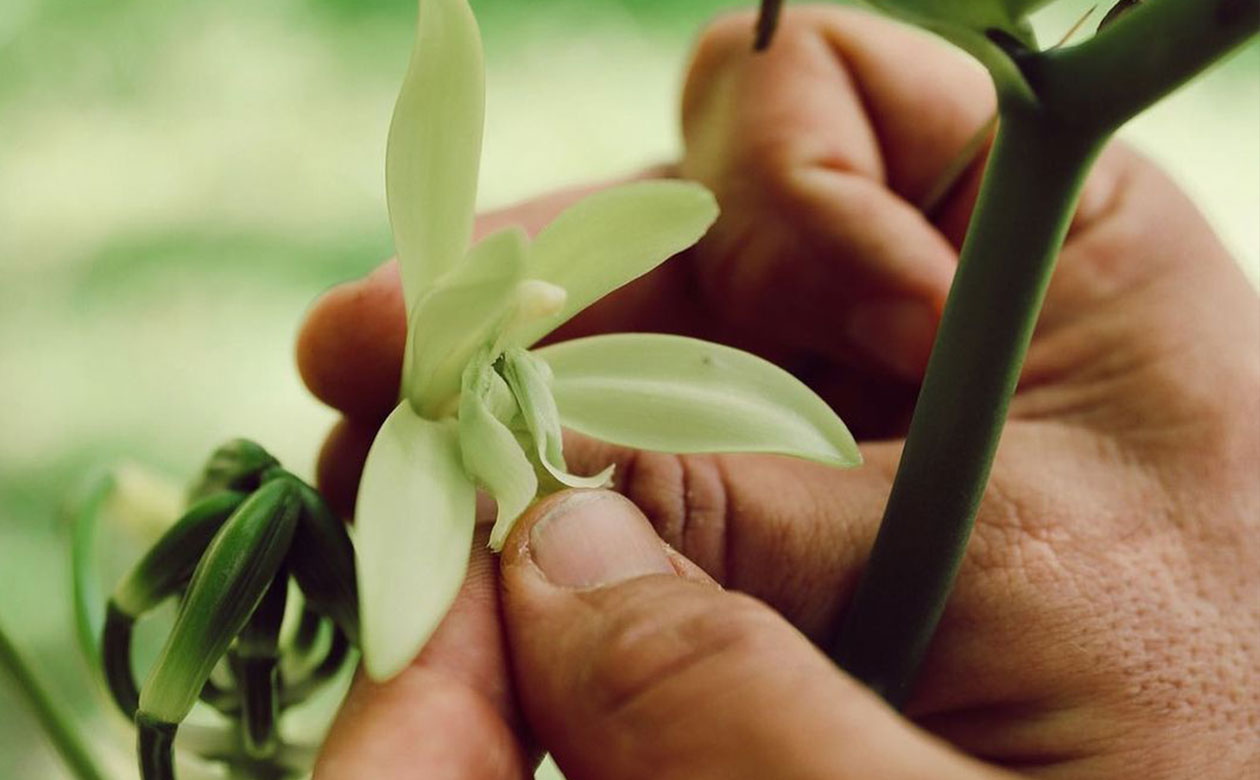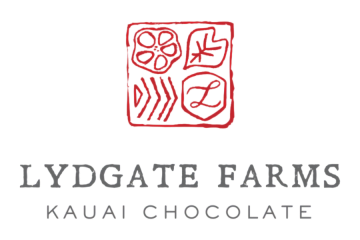From Bitter to Sweet: How Hawaiian Vanilla is Changing the Story


Today less than 1% of vanilla flavoring sold in stores and used in your favorite foods comes from the vanilla orchid. Hawaiian vanilla farmers like Will Lydgate are trying to change that by adding a little sweetness to the state’s agriculture and tourism industries. Find out how and shop for Lydgate Farms Hawaiian Vanilla here.
We tend to take vanilla for granted because it is a key ingredient and fragrance in many of our favorite drinks, desserts, bath, and body products. But there is almost nothing plain, basic, or boring about this incredible seasoning. Second only to saffron on the list of the world’s most expensive spices, vanilla’s history and cultivation are as complex and interesting as its flavor.
Though vanilla is considered one of the most labor-intensive crops, some of Hawaii’s farmers see sweet opportunity in the space where agriculture and tourism meet. Learn more about the bittersweet story of vanilla and how Lydgate Farms is paving a sustainable way forward for the fine food flavor we all adore.
Where Does Vanilla Come From?
Vanilla is a member of the orchid family and native to Central and South America. The Totonac people of Mexico are credited as the first to cultivate vanilla, using it in a beverage made from cacao and other spices. The Aztecs conquered the Totonac in the 15th century and adopted the use of vanilla in their nutritious and energizing drink, also made from cacao and known as cacahuatl or chocolatl. Europeans followed suit, as Spanish Conquistadors brought vanilla to the European continent and used vanilla as an additive to drinking chocolate.
According to National Geographic and Food Historian Waverly Root, vanilla was a late addition to America’s recipes and food culture. Thomas Jefferson was introduced to vanilla ice cream while living in France in the 1780s and brought back a recipe now preserved in the Library of Congress. Vanilla didn’t appear in an American recipe book until 1805. Still, demand for the flavoring exploded in the latter half of the century as vanilla became an essential ingredient in ice creams and beverages such as chemist John S. Pemberton’s Coca-Cola, which went on sale in 1886.

How Does Vanilla Grow?
Vanilla comes from the seed pod or fruit of the Vanilla orchid. There are three primary species of vanilla grown around the world. Most commercially available vanilla comes from V. planifolia is a climbing vine that grows up trees in Madagascar and the Island of Reunion, which produce nearly two-thirds of the global supply. V. pompona grows in the West Indies, Central and South America and V. tahitensis can be found in Tahiti and the South Pacific.

Tiny vanilla seeds inside a vanilla pod at Lydgate Farms
While all of these species produce the seed pods needed to make vanilla as we know it, pollination is required within 36 hours of flowering to ensure fruit will develop. At Lydgate Farm flowers open at about 6:00 a.m. and close in the early afternoon which makes for busy mornings on the farm when flowers are in season. Not only is the narrow window of time for pollination a tricky component, but most of the vanilla must be hand-pollinated because the natural pollinators for the flower are extinct or few and far between. Not only is pollination labor-intensive, once harvested, vanilla requires a lengthy and precise fermentation and drying process to intensify the delicate, floral flavor we crave.
Imitation Vanilla
Due to the cost and labor-intensity required to produce authentic vanilla, most of the vanilla flavoring you consume today is an imitation derived from other, often questionable sources. In the late 19th century, scientists discovered a way to isolate vanillin, the primary organic compound responsible for vanilla’s alluring aroma, from less expensive sources.

Shutterstock: Sobotta
Plants, wood pulp, clove oil, and even some animal feces contain the vanillin compound. According to the Smithsonian Institute, 85% of vanillin used today comes from guaiacol derived and synthesized from petrochemicals. One reason this isn’t widely known is that the American Food and Drug Administration in charge of food labeling requirements broadly defines “natural flavoring” to mean anything that is derived from “a spice, fruit or fruit juice, vegetable or vegetable juice, edible yeast, herb, bark, bud, root, leaf or similar plant material … whose significant function in food is flavoring rather than nutrition.”
Not only does imitation vanilla have questionable origins, but demand for the inexpensive dupe has created a wave of environmental issues from wastewater dumping to pollution. So, the question at hand is, how do we move away from synthetic sources of vanilla toward a more sustainable future for one of the world’s favorite flavors? Hawaiian Vanilla farmers may hold the key.
History of Hawaiian Vanilla
Vanilla first arrived in Hawaii in the late 1800s after the overthrow of the Hawaiian Monarchy and cession to the United States. John Kidwell, a trained nurseryman from London also credited with the founding of Hawaii’s pineapple industry, brought vanilla to Oahu and experimented with growing a small crop in the mid-1880s. The test went well, and several small vanilla plantations and operations sprang up across the islands with moderate success through the mid-19th century.
At that time, Hawaiian vanilla commanded a high price of nearly $15 per pound. A farmer could make anywhere from $500 to $5,000 per acre until the discovery of imitation vanilla made farming the fragrant crop nearly impossible (Crawford, 1937).

Hawaiian Vanilla Today
As labor cost increased, much of Hawaii’s large-scale pineapple and sugar cane agriculture industry faded away in the 20th century, leaving farmers to lean on more exotic and specialty crops to make a living.
Today Hawaiian Vanilla is experiencing a bit of a renaissance as an in-demand, specialty crop and opportunity for Hawaii farmers to cross-over into the tourism market. According to edible Magazine, Hawaiian Islands, The Hawaiian Vanilla Company on the Big Island is credited with being America’s first to grow and sell Hawaiian vanilla beans and products on a commercial scale and offer vanilla farm tours. As small, independent farms continue to pop up across the state, taking a play from the tourism playbook and offering tours and tasting experiences helps supplement income, create awareness and demand for authentic Hawaiian vanilla.
“We believe the key to the future of agriculture in Hawaii lies in creating high-quality products from specialty crops, such as cacao and vanilla, cultivated in sustainable ways that work with the land,” says Will Lydgate, owner of Lydgate Farms on Kauai. The fifth-generation, family-owned farm is 46 acres tucked into the misty mountains above Kauai’s eastern shore. Will and his family grow high-quality cacao to make the finest craft chocolate as well as award-winning vanilla and honey.

Will Lydgate opening cacao
“We use natural farming techniques and organic fertilizer to build soil health and nurture the land. In Hawaiian, the phrase Malama’ Aina means to care for the land so it can sustain life for future generations,” said Will. “We are proud to continue our family’s legacy and support sustainability efforts through the experience of thoughtfully crafted chocolate, small-scale farming, and educational farm tours,” he continued.
Taste the difference sustainably-grown, Hawaiian vanilla and chocolate have to offer. Schedule a tour and shop for Lydgate Hawaiian vanilla beans, vanilla extract kits, and bean-to-bar, single-origin chocolate online now.
